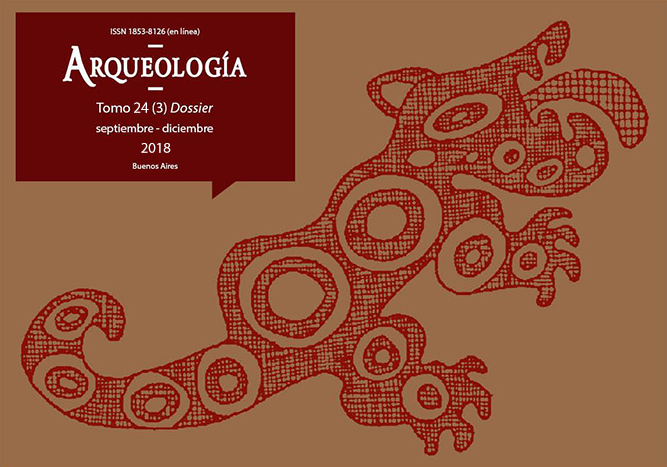Application of LIDAR technology at El Shincal de Quimivil, Londres, Catamarca
Keywords:
LIDAR, 3D, Digital Terrain Model, Archaeology, El Shincal de Quimivil, Northwest Argentina
Abstract
The aim of this article is to assess the potential that LIDAR (Light Detection and Ranging) has for the study of archaeological sites. In doing so, we present our recent research on the site of El Shincal de Quimivil and watershed of the Zapata mountain range, Department of Belén, Province of Catamarca. This is the first research that employs this technology at an archaeological site in the Argentine Republic. LIDAR technology is based on the emission and registration of reflected laser light which thereby allows the identification of different levels of data that the beam finds across its path. This property makes it possible to detect a priori constructions hidden by layers of vegetation. The use of this methodology in different parts of the world has led to the discovery of previously hidden structures and archaeological sites in recent years. The results of our study revealed the presence of new, previously unregistered, archaeological structures at the site, and the generation of a high-resolution Digital Terrain Model (DTM).Downloads
Download data is not yet available.
How to Cite
Moralejo, R. A., Gobbo, D., Del Cogliano, D., & Pinto, L. (1). Application of LIDAR technology at El Shincal de Quimivil, Londres, Catamarca. Arqueología, 24(3), 165-184. https://doi.org/10.34096/arqueologia.t24.n3.5386
Section
Articles
Authors who publish in this journal agree to the following conditions:
- Authors retain copyright and yield to the journal right of first publication with the work registered with attribution license Creative Commons, which allows third parties to use the published always mentioning the authorship of the work and first publication in this magazine.
- Authors can make other independent and additional contractual arrangements for the non-exclusive distribution of the version of the article published in this issue (p. Eg., Inclusion in an institutional repository or publish it in a book), provided that clearly indicate that the work was published for the first time in this magazine.
- It allows and encourages the author / s to publish their work online (eg institutional or personal pages) before and during the process of revision and publication, as it can lead to productive exchanges and greater and more rapid dissemination of work published (See The Effect of Open Access).





(1)13.png)






1.jpg)
1.jpg)


13.png)
1.png)


(1)1.png)









